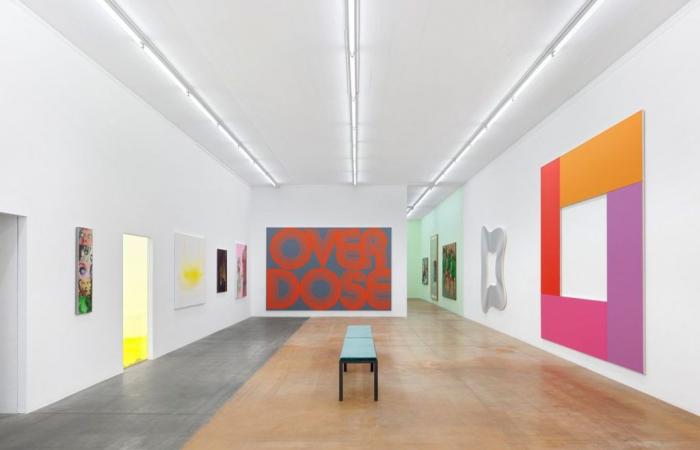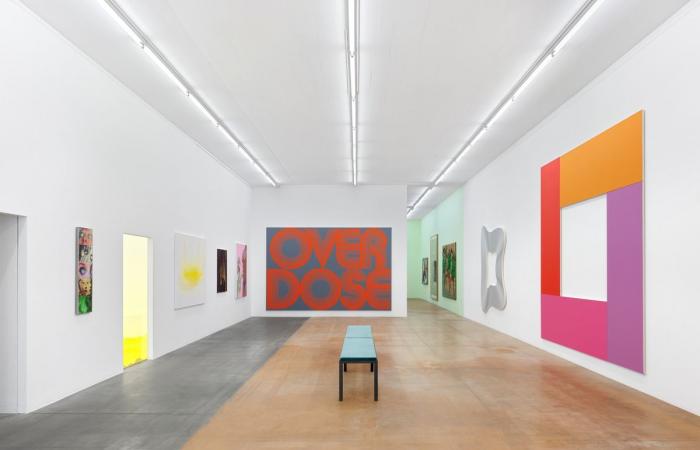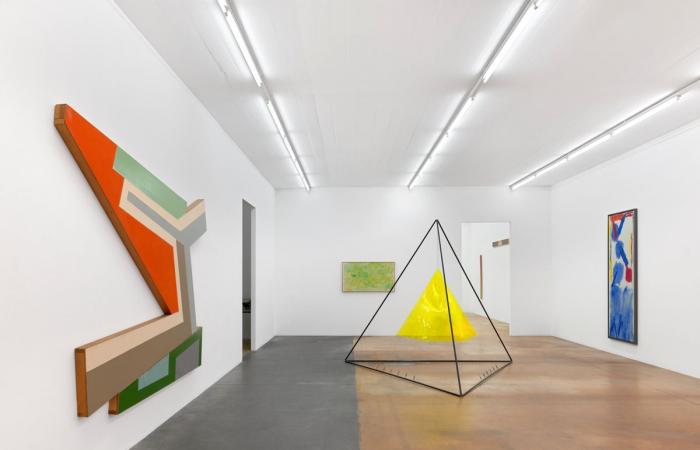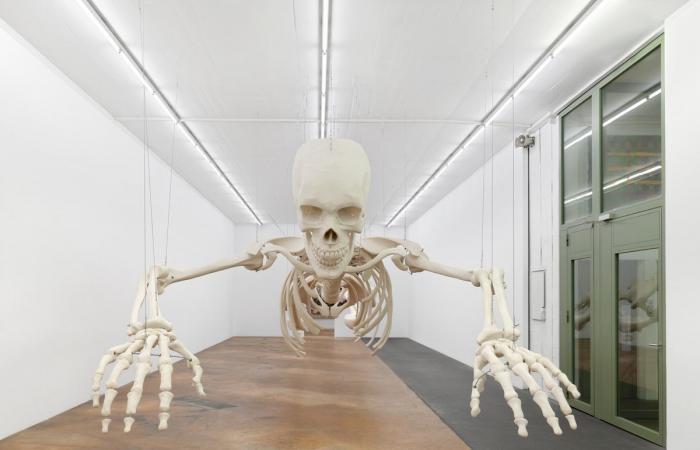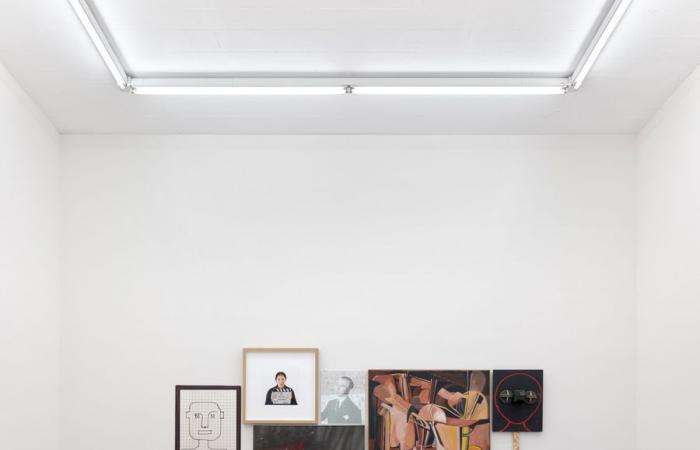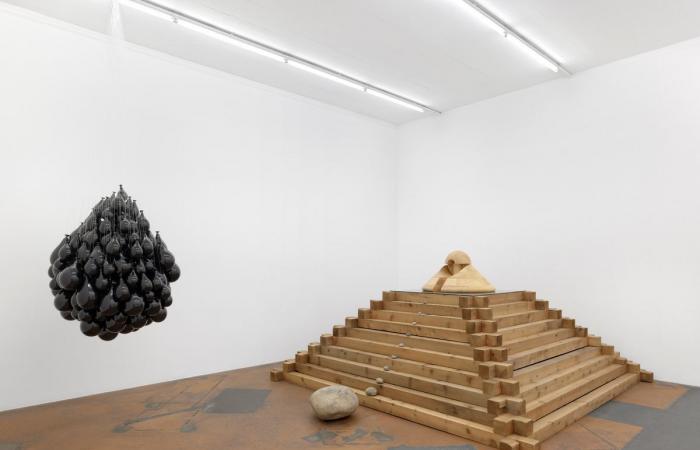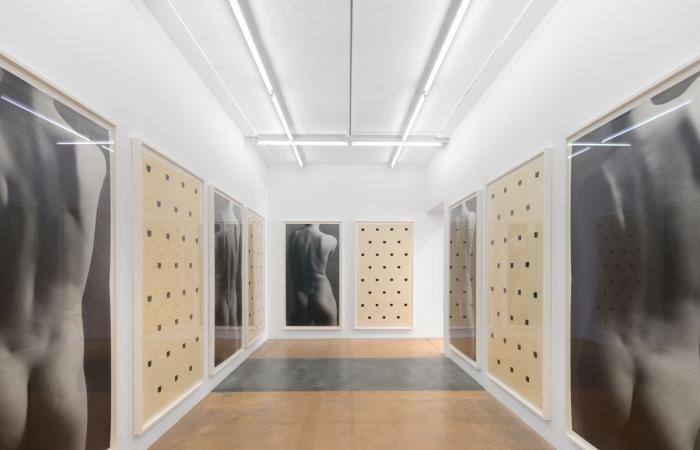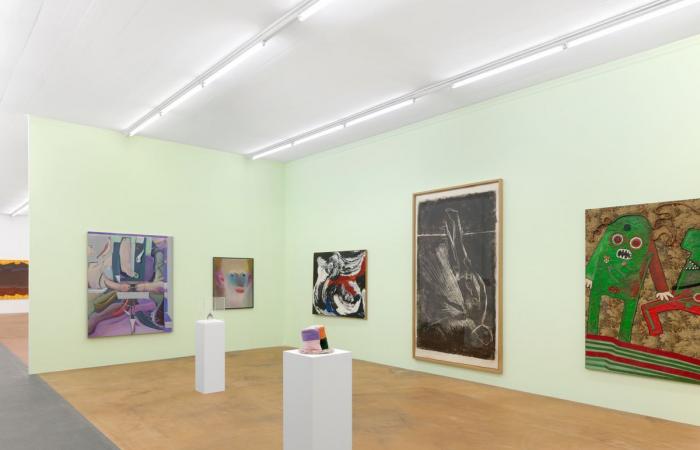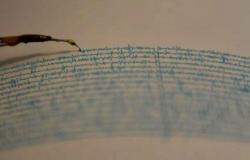– Mamco works from memory before work
Chosen by the public from the collection, 300 pieces make up a participatory display and paint a cheerful portrait of the museum, inaugurated in 1994.
Published today at 11:46 a.m.
Mamco is interested, as here, in the way in which shapes circulate. At the back of the room, a large painting by Genevan Christian Robert-Tissot proclaims the overdose (2007).
ANNIK WETTER
Subscribe now and enjoy the audio playback feature.
BotTalk
- The Mamco is organizing a participatory exhibition before its closure in 2025.
- Three hundred works selected by the public are on display until December 22.
- The display features various artists, including museum loyalists.
- It celebrates the 30 years of existence of Mamco, inaugurated in 1994.
This is a clash that clearly makes Julien Fronsacq happy. Because it required a good dose of ingenuity, inventiveness and humor from the chief curator and the team of the Museum of Modern and Contemporary Art to put together “The Mamco, from memory”. On the basis of choices made by the public among the works in the collection, the curatorial brigade endeavored to compose, with disparate pieces, a kind of giant puzzle, using the entire exhibition spaces as playground.
Three hundred creations, out of the approximately 6,000 in the reserves, occupy the institution from floor to ceiling, in an abundant and fun proposition which will be the last before the building closes in 2025 for at least three years of renovation. It was thanks to a survey sent by email at the beginning of the year that they arrived at the picture rails: this message invited amateurs to elect their favorite work by drawing from the online catalog. Around 1,000 votes were cast when voting closed in April.
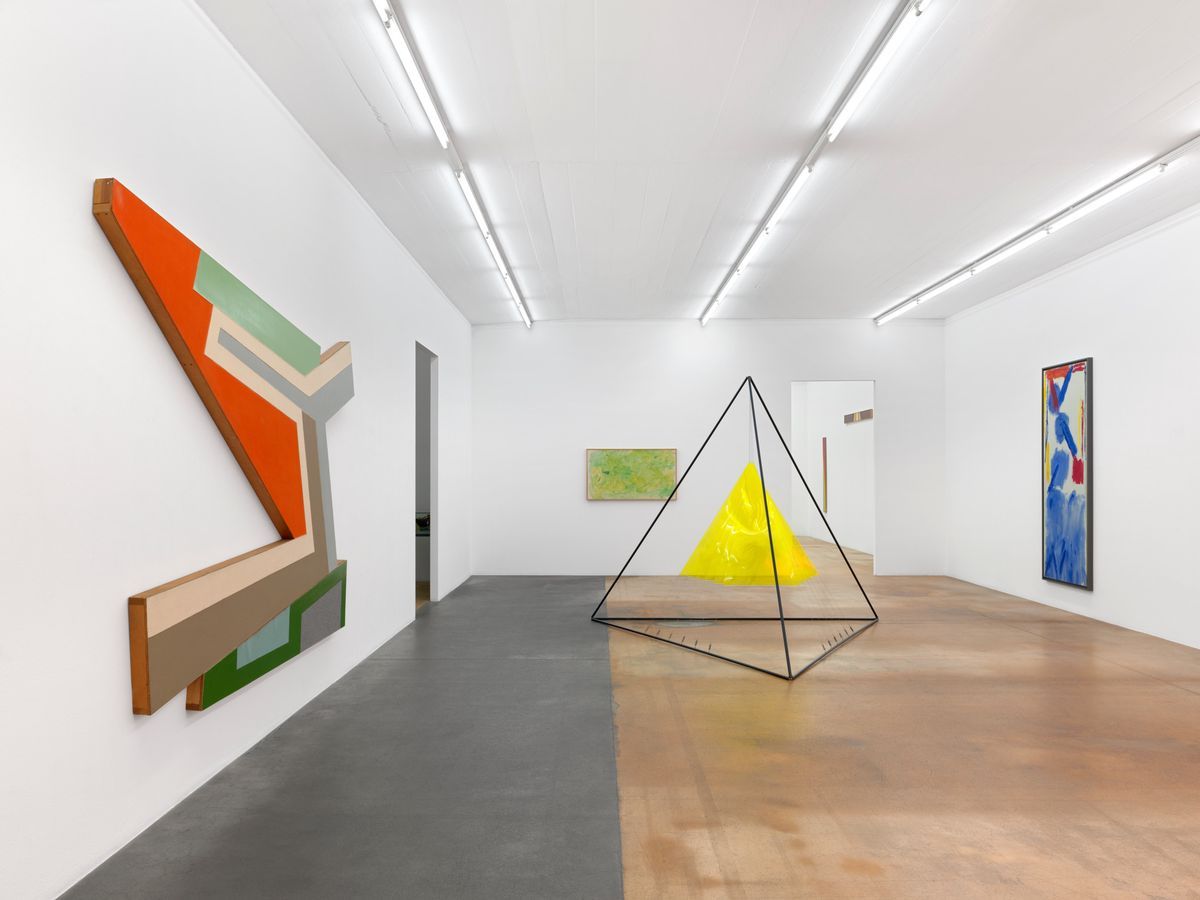
Throughout the exhibition, we come across a remarkable Frank Stella (“Kamomika Strumilowa I” (1972), left); in the center, a “Pyramid No. 4” by Piotr Kowalski (1967).
ANNIK WETTER
Magma coherence
“At one point, we looked at the result and Lionel (editor’s note: Lionel Bovier, the director of the museum) wisely recommended that I see if everything could fit, smiles Julien Fronsacq. We stopped there!” All the requested pieces are presented, with the exception of two, one being currently on loan and the other proving too imposing. Then, it was a matter of coherently articulating this magma.
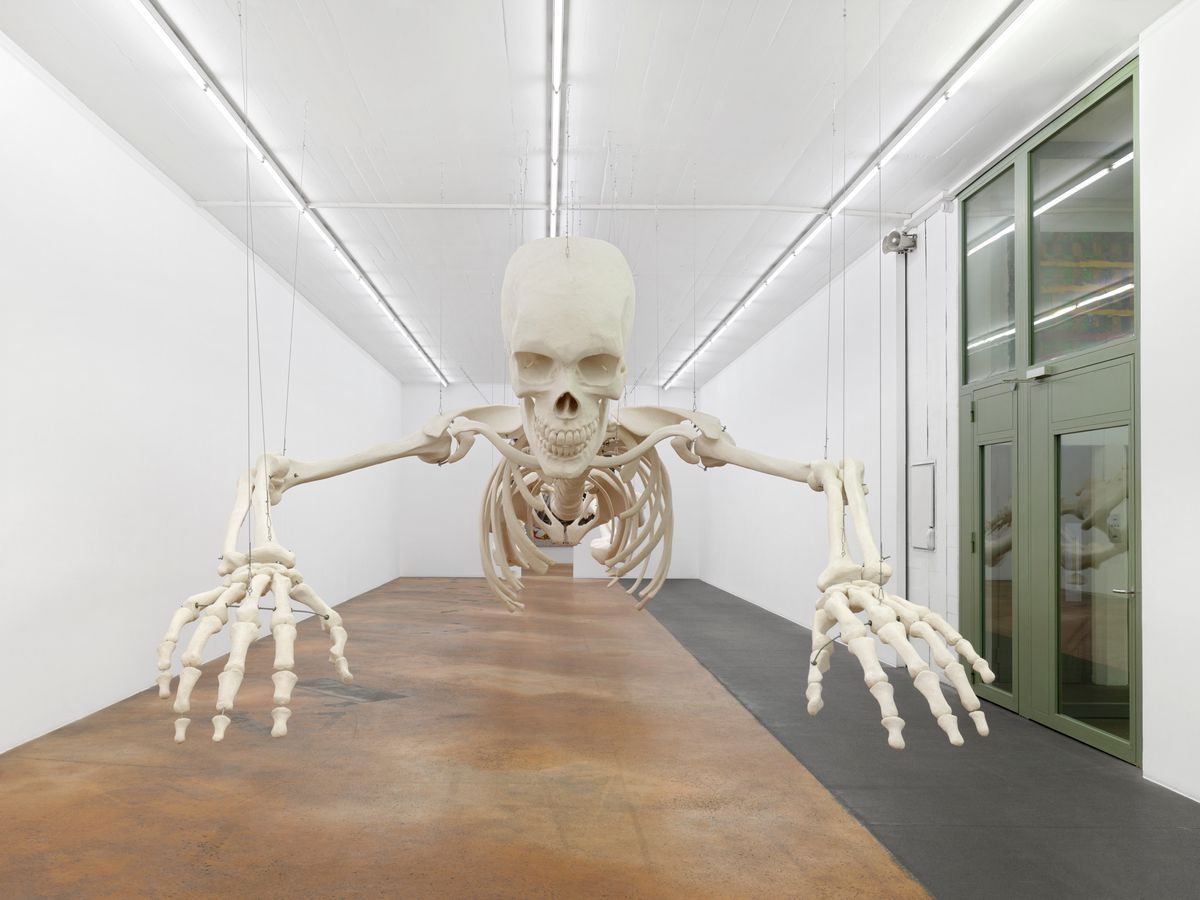
The famous “Habibi” (2003), by Adel Abdessemed, stars in the 2e floor.
ANNIK WETTER
“I took out the list of works and cut out vignettes,” explains the coordinator of this participatory exhibition. Then, for a day, we played dollhouse to decide what would go where.” The exercise was accompanied by thorny questions: was there a need for a chronological journey, formal comparisons, retracing the major historiographical stories, assembling the achievements through dialectics or analogy? Or not?
“Finally, we did a bit of all that,” he continues. Our collection is neither that of MoMA (Museum of Modern Art de New York) ni celle du Pompidou Center: its size does not allow us to dedicate a room to each movement. However, some pieces are masterpieces worthy of great museums.” The question of the importance or not of this or that work also gave rise to lively debates within the members of the team: “Sometimes, we did not agree at all between us.”
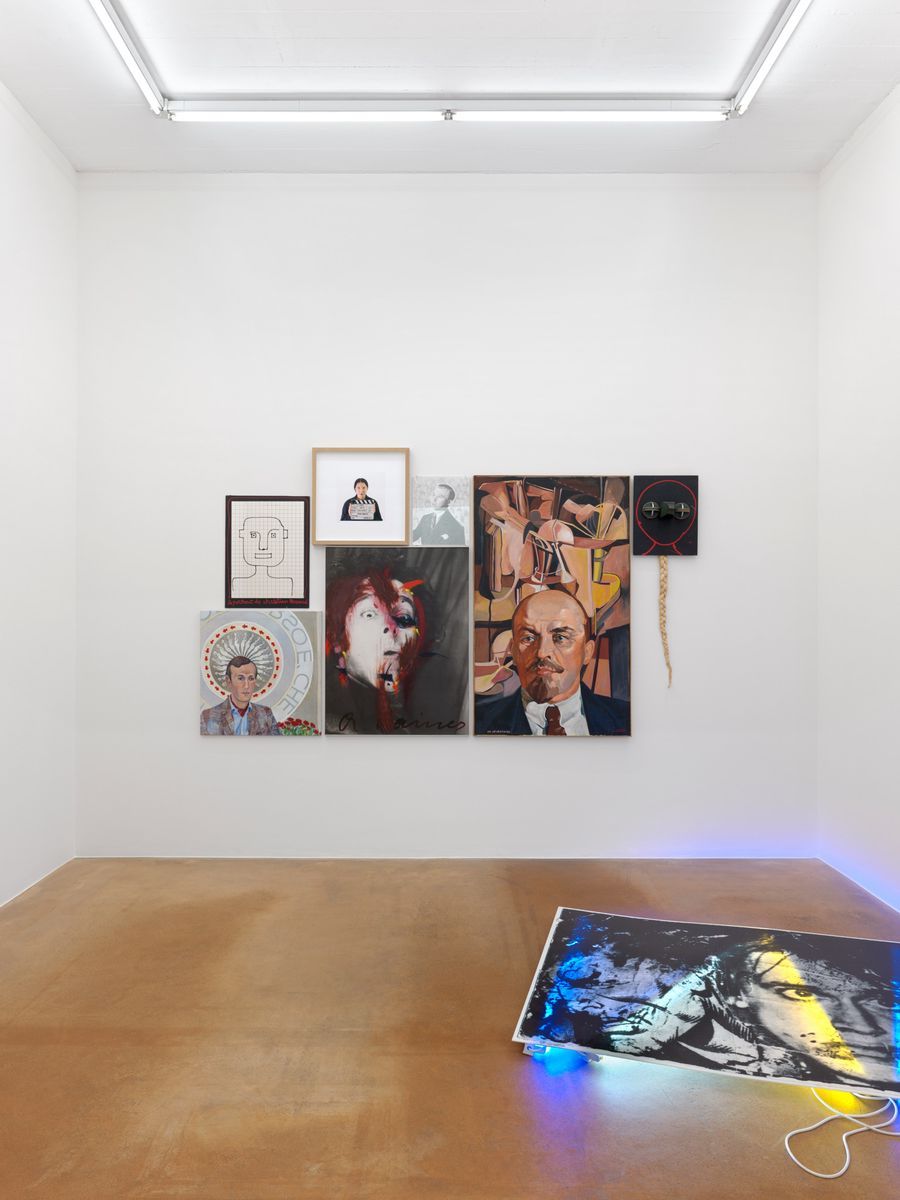
A series of portraits is displayed on powder pink walls. Top left, Christian Bernard, the first director of Mamco, seen by Ben in 1988.
ANNIK WETTER
The staging of the rooms was distributed according to the affinities and skills of each curator and curator, and certain paintings and installations were bypassed until the last moment. What emerges from this joint reflection is a sort of hollow portrait of Mamco, necessarily a little heterogeneous given the protocol applied, yet successful and endowed, due to its plural conception, with a “pretty cool choral effect”, as underlines Julien Fronsacq.
The exhibition offers an opportunity to embrace the history of an institution always in motion, which this year celebrates its 30 years of existence – including two decades under the leadership of Christian Bernard and one under the leadership of Lionel Bovier. Inaugurated in 1994 with only a few dozen works brought together by the Amam (Association for a Museum of Modern Art), the Mamco has built up over time a singular corpus ranging from the 1950s to the present day, never dictated by fashions, and interested, in particular since 2016, in the blind zones of art history.
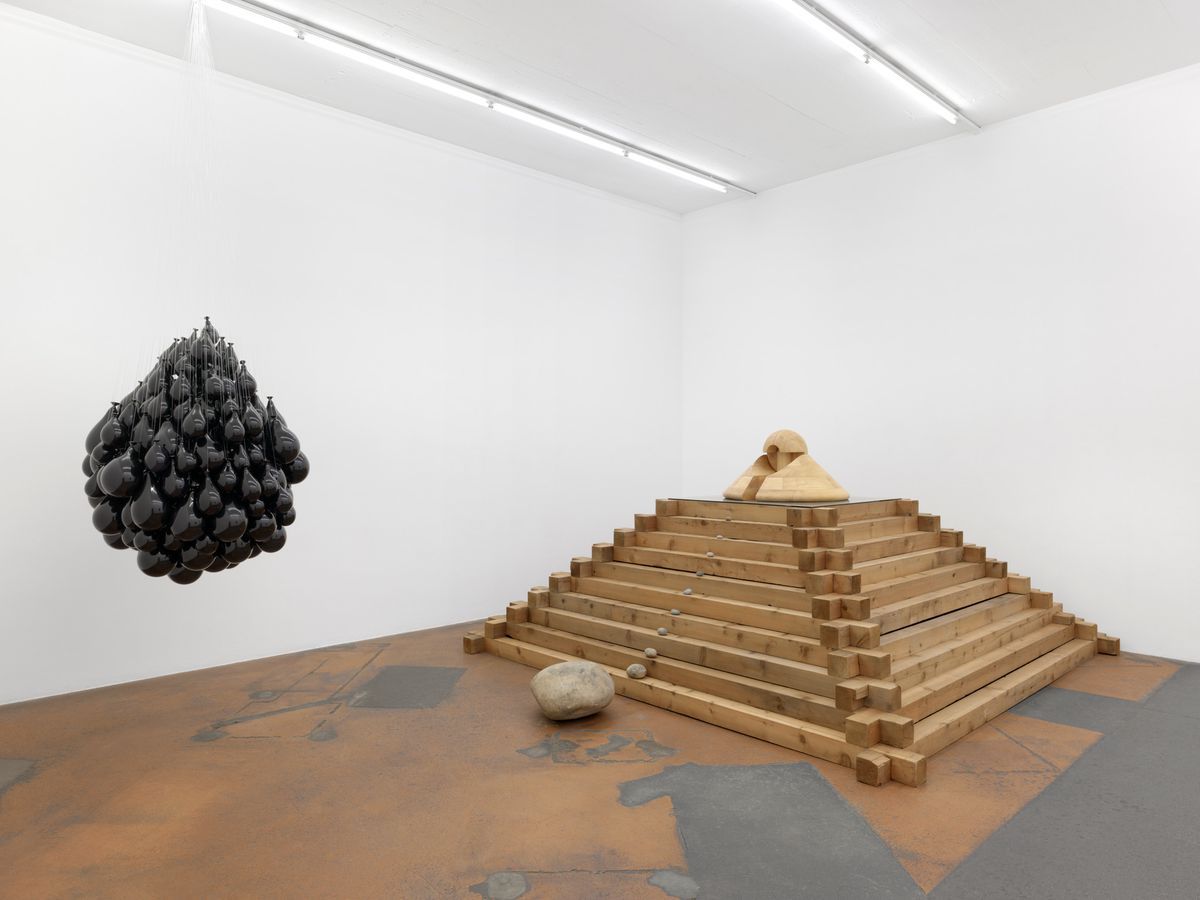
The “Pyramid” (1972-1975) by Gianfredo Camesi was, until an enlightened amateur set his sights on it for the exhibition, nothing more than a pile of boards in a corner of the warehouses.
ANNIK WETTER
Faithful Genevan artists
Characteristics that we find while browsing “From Memory”, during which we (re)encounter Franz Erhard Walther with his “1. Werksatz” (1963-1969), composed of textile elements to be activated, the visual artist of Pakistani origin Rasheed Araeenthe Zurich resident Verena Loewensbergthematizing the question of the grid, or the representatives of the Pictures Generation, named after this group of artists who have made the appropriation and refabrication of existing images their specialties and of which the Mamco has a significant number of pieces .
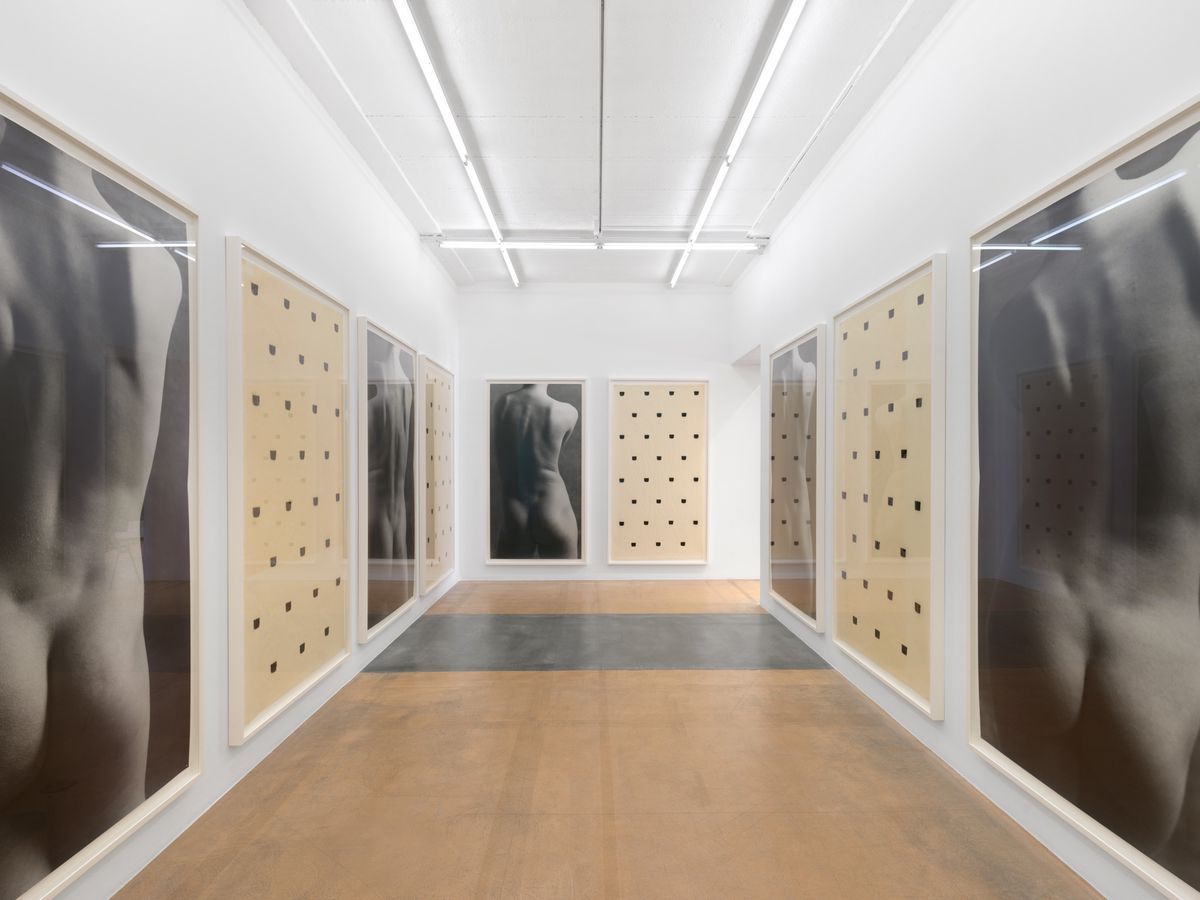
Au 4e upstairs, a small room is dedicated to a masterpiece of architectural dimensions created by the Swiss Niele Toroni, with a brush, and Balthasar Burkhard, with photography, in 1984.
ANNIK WETTER
We are pleased to see the reappearance of the “Riverrun” (1994-2013) by the American sculptor Richard Nonas, which spreads a volute of 37 steel bars on the ground, the “Bureau d’activities implicites” (2003) by Tatiana Trouvé, the circular installation made up of colored wooden dice by Robert Filliou, the decaying cathode ray screens of Nam June Paik, a South Korean pioneer of video art, or the amusing field of lettuce made of painted polyurethane foam designed by Piero Gilardi. There are also the Genevans faithful to these walls, like John Armleder, Fabrice Gygi, Sylvie Fleury, Carmen Perrin or Christian Robert-Tissot – with the notable exception of Mai-Thu Perret.
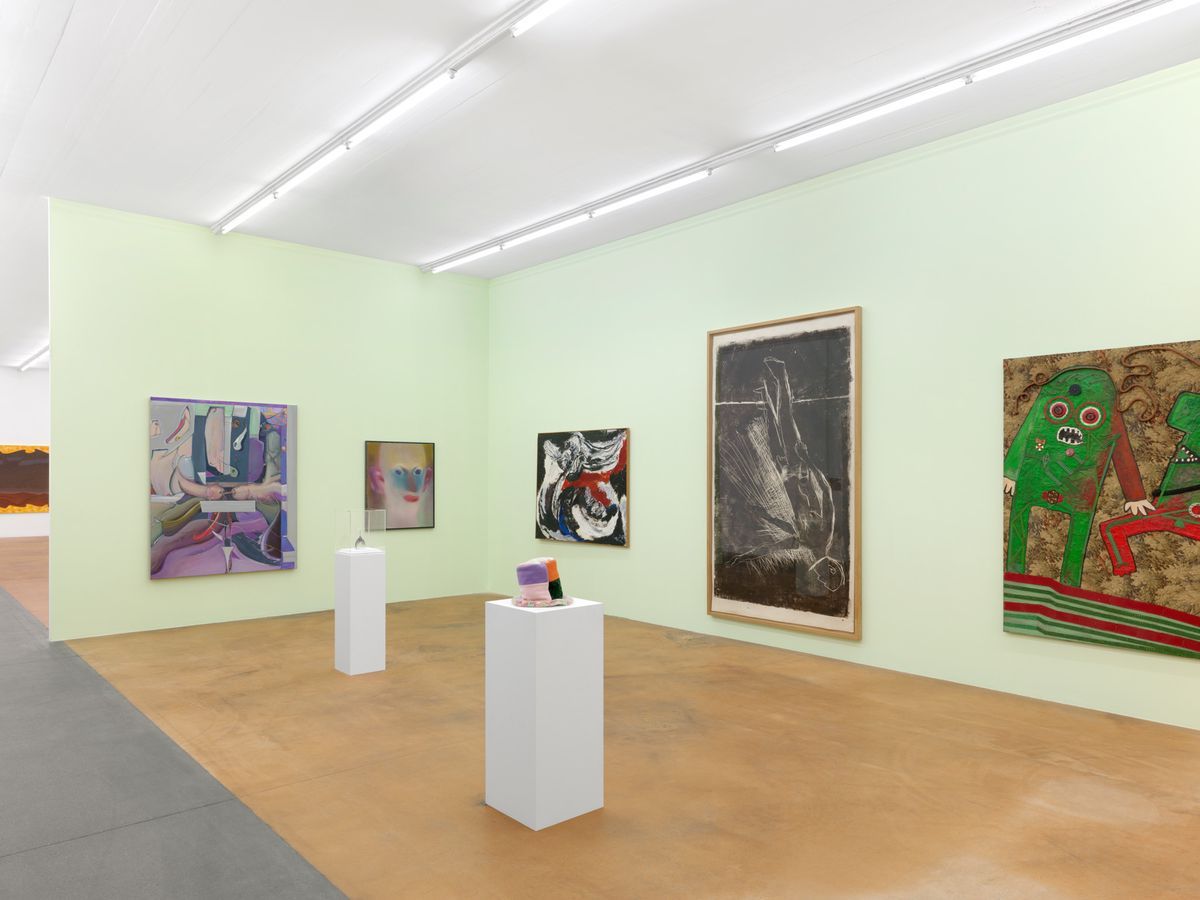
A space is dedicated to the figure, where we spot an oil by Miriam Cahn (2e painting from the left) and a linocut by Georg Baselitz (2e from the right).
ANNIK WETTER
Alongside completely unknown creations – a “Pyramid” (1972-1975) by Gianfredo Camesi, requested by mail following the article of the “Geneva Tribune” which announced this exhibition in February – visitors will appreciate some essentials from the catalog, such as the two stars of the exhibition which are “Habibi” (2003), a colossal floating skeleton by Adel Abdessemed, and “La Forêt” (1998) by Xavier Veilhan, through the felt trunks and in the padded darkness in which young and old will love to wander.
Until December 22 (at least) at Mamco, 10, rue des Vieux-Grenadiers. Tue-Fri 12 p.m.-6 p.m., Sat-Sun 11 a.m.-6 p.m.
Did you find an error? Please report it to us.
0 comments

